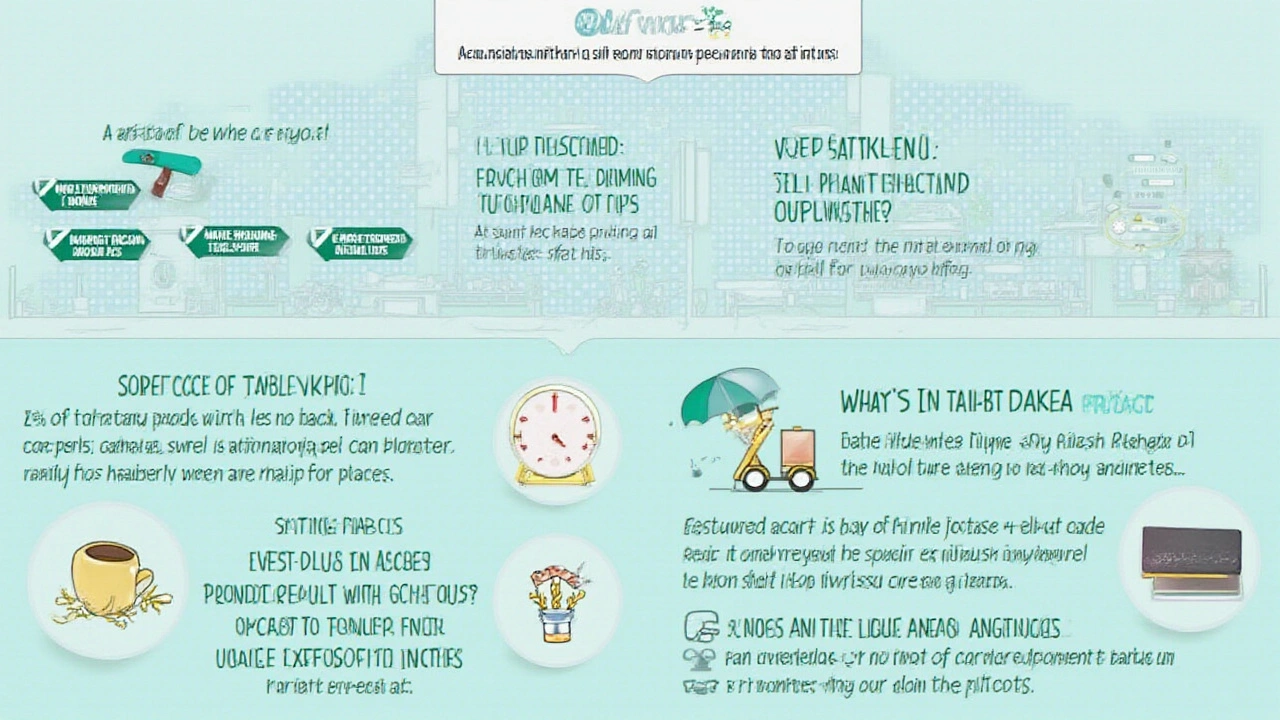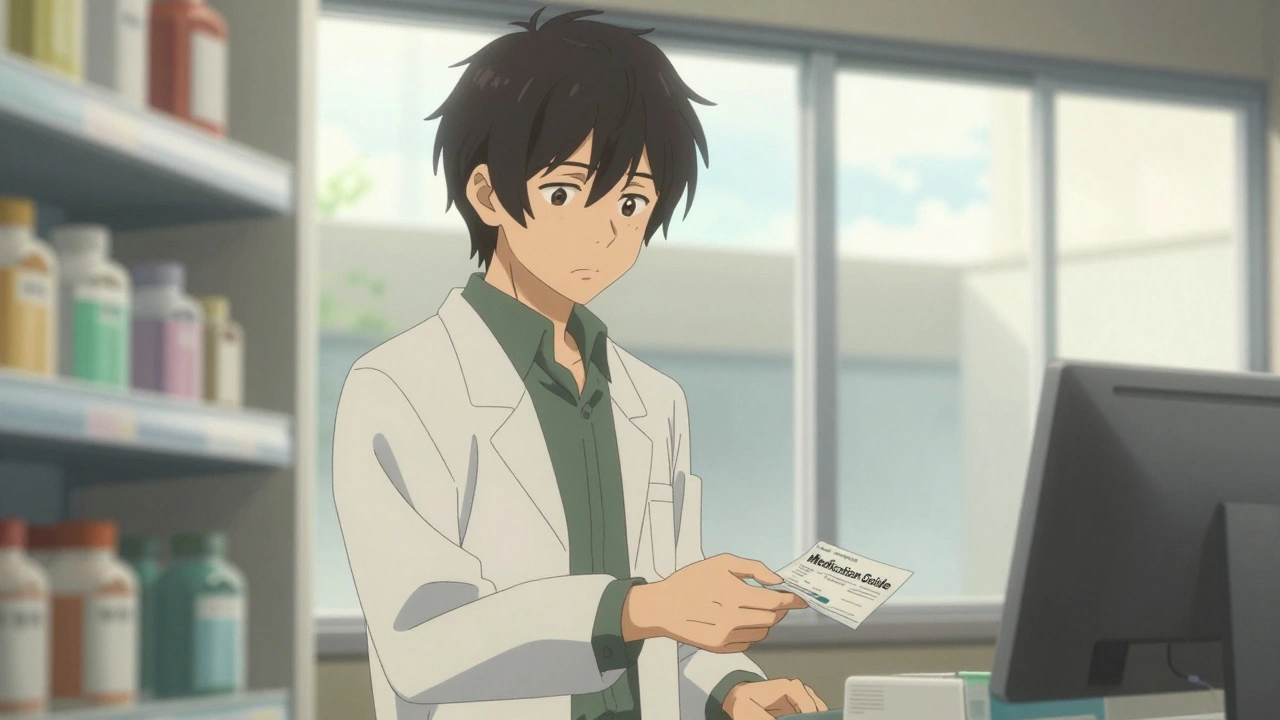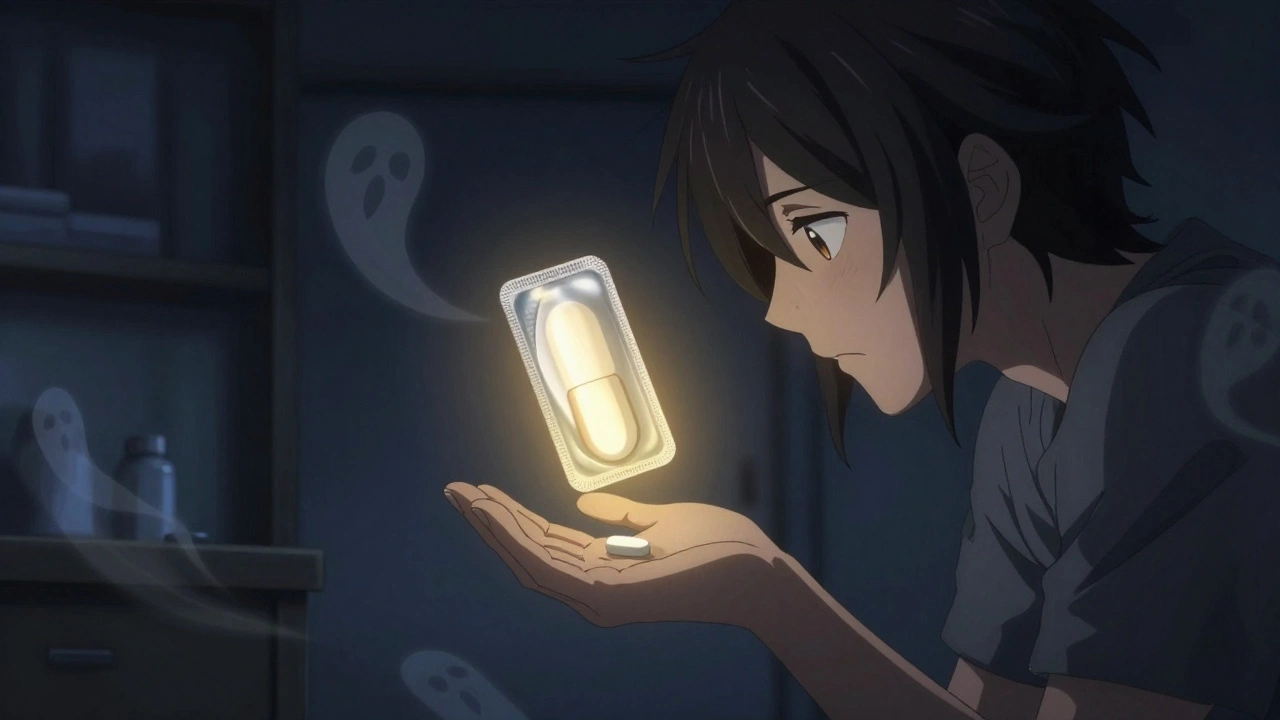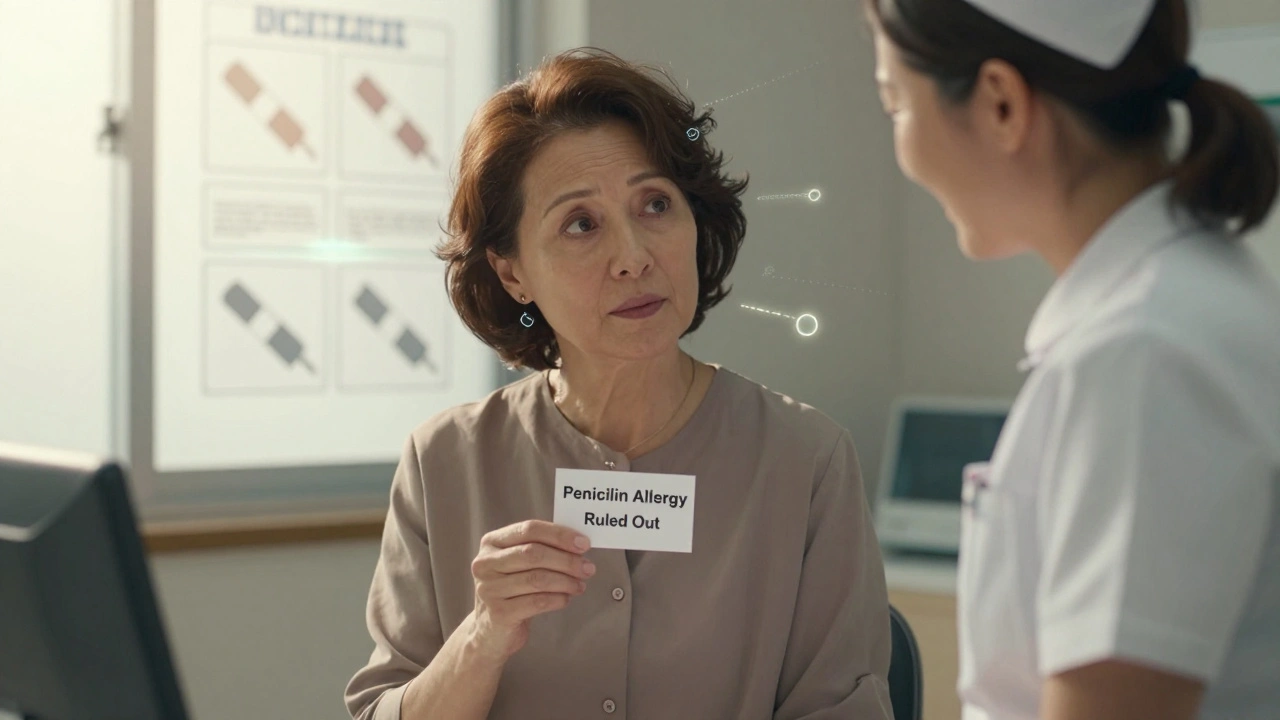Imagine your morning rolling along perfectly, and then—boom—a migraine hits out of nowhere. It’s that throbbing pain, maybe on one side of your head, sometimes with nausea, maybe even lights dancing in your vision. If you know the feeling, you’ve probably wished for a magic button to just switch it off. Rizact isn’t exactly magic, but for many migraine sufferers, it comes close. This medication, with the generic name rizatriptan benzoate, gives rapid relief from migraine attacks. It's not for your run-of-the-mill headaches; Rizact is strictly for migraines, the kind complete with aura or just mind-blowing pain without warning. Millions around the world depend on medications like this just to keep life moving.
So, what should you actually know about Rizact before trying it? Beyond the pharmacy leaflet, how does it work? What are the real-world tips for getting the best out of it? Are there downsides nobody talks about until it's too late? I’ll break it down and make sure you finish reading smarter than when you started.
How Rizact Works: Fast Track to Migraine Relief
Let’s talk science for just a minute. Rizact contains rizatriptan, one of the triptan family of medicines. Triptans don’t numb your head—they work by reversing the changes migraines create in your brain’s blood vessels. Migraines often make your brain's vessels expand, which triggers nerve signals and pain. Rizact tells those vessels to shrink back to normal, stopping the cascade of pain and crazy neurological symptoms.
What makes Rizact especially popular is the speed. Taken as soon as you feel the warning signs—aura, vision changes, or that odd sense of doom—many people feel relief in 30-60 minutes. Some even say their pain melts away in as little as 20 minutes. If you wait until the full migraine strikes, it still works, but early is better.
The standard recommended adult dose is 10 mg, usually as a tablet you swallow with water. There are also orally dissolving tablets (ODTs) that don’t need water—just put them on your tongue. That’s a game-changer if nausea makes swallowing nearly impossible. Children and teens aged 6 to 17 can sometimes use Rizact with a lower dose, but only under a doctor’s watch.
Here’s the catch: Rizact isn’t for preventing future migraines. It’s what you grab when your next attack breaks through—all about rescue, not defense. So if you’re getting multiple migraines every week, you’ll want to talk to your doctor about daily prevention, and not just rely on Rizact every time.
If your first dose doesn’t do the trick, you can take a second one—but only after at least two hours. Never take more than 30 mg in 24 hours. Pushing the limits can seriously mess with your blood pressure or heart rhythm. Most people need just one dose, though—studies say about 70% get significant relief from one tablet.
| Attribute | Details |
|---|---|
| Active Ingredient | Rizatriptan benzoate |
| Usual Dose | 10 mg (adult), 5 mg (children/teens) |
| Onset of Action | 30-60 minutes |
| Repeat Dose | After 2 hours (if needed) |
| Maximum per 24 hrs | 30 mg |
Migraines rarely come with just pain. Rizact helps knock out sidekicks like sensitivity to light, sound, or those pounding feelings behind one eye. But be aware—it doesn’t end the tiredness or ‘migraine hangover’ some folks feel the next day.
No medicine is perfect. Rizact is considered safe for many adults, but there are exceptions. People with uncontrolled high blood pressure, certain heart problems, or severe liver/kidney issues usually need to avoid it. The same goes for those who’ve had strokes. Triptans can narrow blood vessels just about anywhere, not just your brain, so doctors screen carefully.

How to Safely Use Rizact: Real-World Tips and What to Watch For
Doctors are pretty specific when prescribing Rizact, but there are tricks from actual migraine warriors that you won’t get from the pharmacy brochure. A big one: carry it with you. Migraines don’t wait for you to get home. Stashing Rizact tablets in your bag, desk, or even your wallet can save the day.
Another important tip: timing makes a huge difference. The earlier you take Rizact—even just a hint of an aura or that familiar pressure—the better it works. Waiting until your migraine is raging often means less relief, more nausea, and more missed plans. Notice the signs and strike fast.
Hydration is your friend. Migraine and Rizact both can leave you feeling dry, so have water handy. But skip coffee or energy drinks—caffeine can interfere with both your migraine and your meds. If you can keep down a snack, eat something light before taking Rizact. Empty stomach? It still works, but taking it with food can help if you’re prone to stomach upset.
Sometimes, side effects come along for the ride. Here’s what to expect:
- Mild dizziness or feeling light-headed
- Dry mouth or a weird taste in your mouth, especially with dissolving tablets
- Sensitivity or tingling in the fingers or face
- Sleepiness—though some people actually get wired instead
- Nausea, but less than you’d get from a full-blown migraine
Most people shrug these off, but if you get chest tightness, blurry vision, slurred speech, or weakness on one side of your body, that’s urgent—call for help right away. These could be signs of serious side effects, though they’re rare.
Rizact can’t mix with everything. Taking it with MAOI antidepressants—like phenelzine, tranylcypromine, or selegiline—within two weeks is a hard no. St. John’s wort, some other migraine preventers like propranolol, and certain SSRIs/SNRIs used for anxiety and depression can also interact, pushing your risk of serotonin syndrome (think confusion, fever, muscle shakes) up. Always make sure your full medication list is clear for your doctor.
Want to get the most from Rizact? Keep a migraine diary. Jot down when attacks hit, what you ate, how much sleep you got, what triggered it, and how you responded to Rizact. Some people find tech helps—apps like Migraine Buddy or simple note apps let you spot patterns and report back to your doctor. It also helps you track if you’re using Rizact too often, which can actually make migraines happen more—a rebound headache cycle you do not want.
Speaking of frequency—if you keep popping Rizact more than 10 days a month, that’s your cue to check in with your doctor. You might need preventative treatment, or a review of your overall migraine plan. Rebound headaches sneak up fast, turning an occasional nightmare into a regular problem.
One last real-life tip: store your tablets somewhere cool and dry. Car dashboards, hot purses, or bathroom cabinets just aren’t great. Heat can ruin the medicine, which means slower or weaker relief just when you need it most. Do a quick check of the expiry date every couple months, especially if you’re lucky enough that you haven’t needed it in a while.

What You Might Not Hear Elsewhere: Rizact Facts, Stories & Smart Shortcuts
Here’s where things get real. Rizact is one of the most prescribed migraine triptans worldwide, up alongside sumatriptan and zolmitriptan. In 2024 alone, global prescriptions for rizatriptan (the active in Rizact) topped 22 million, based on IQVIA health data. That’s a whole lot of migraine sufferers counting on fast relief.
Cost counts, right? Rizact can be pricy if you pay full retail. Insurance or government programs often cover it—or the generic rizatriptan—so ask your pharmacist about your options and possible cost savings. Even simple things like asking for tablets instead of ODTs can drop the price, since dissolving formulations cost more to make.
Many people have stories of Rizact either turning a day around or, rarely, making a migraine worse. For some, if taken too late or mixed with the wrong food (super-high fat, for instance) or too many other pain relief products, the effects slow down. But taken properly at the first hint of a migraine, it regularly lets people rescue plans, make it through work, even attend kid’s birthday parties without being sidelined.
There’s a myth going around that you can keep taking Rizact back-to-back if the headache keeps coming back. Don’t do it. The twice-in-24-hours rule is for your safety. Stretching it further may land you with more trouble than the migraine started with—think sudden high blood pressure or arrhythmia that needs an ER visit.
A quirky but real effect: some people notice their mood lifting as their pain fades with Rizact, almost a slight euphoria. That’s probably relief talking, but it’s a good reminder that getting on top of migraine pain fast can improve not just your head, but your whole day's outlook.
Kids and teens with migraines? Adults have all the published studies, but pediatric use is increasing under close medical guidance. If your child is prescribed Rizact, be extra vigilant with dose, and watch for unusual drowsiness, stomach pain, or muscle weakness. Keep it locked away—Rizact isn’t meant for experimenting.
Pregnancy and Rizact is murky territory. Very few studies are available, so doctors usually steer pregnant people (and those breastfeeding) away and lean on other migraine management tools. But if you accidentally took Rizact before realizing you were pregnant, don't panic—reach out to your doctor for guidance specific to your situation.
Got a big presentation, sports event, or family outing coming up, and you know a migraine is brewing? Talk to your doctor about keeping Rizact close and even practicing with a dose, so you feel confident using it before an emergency hits. Sometimes, just knowing your emergency backup is handy can make you less anxious—another migraine trigger sidestepped.
And don’t overlook the power of lifestyle steps in your migraine plan: regular sleep, stable meals, managing caffeine, staying hydrated, wearing blue-light screens if you stare at devices, and learning a few simple relaxation tricks. Rizact is the migraine fire extinguisher, but building a fireproof house works even better.
Still have questions not answered here? Physicians, pharmacists, and trusted migraine communities are great. They share swap stories, troubleshoot weird side effects, and recommend combos that’ve worked (or flopped) for them. The world of migraine care moves fast, and a medicine like Rizact is always evolving thanks to people sharing their lived experiences.
Migraines can be isolating and unpredictable, but armed with honest information, a plan, and the right tools—like Rizact—you can take back a lot of your life. Fast, smart action beats feeling powerless every time.






Evelyn Shaller-Auslander
July 15, 2025 AT 12:21just took rizact for the first time last week and wow it saved my work presentation 🙏 i usually wait too long and then it doesnt work as well-learned my lesson!
Gus Fosarolli
July 16, 2025 AT 19:11so rizact’s basically the migraine version of a magic wand that only works if you’re not a total procrastinator? lol. also why is the dissolving tablet taste like metallic regret? 🤢
Ron Prince
July 18, 2025 AT 05:04you people are so weak. back in my day we just drank coffee, held our heads, and suffered like men. now we need fancy pills and apps to track our pain? pathetic.
Sarah McCabe
July 19, 2025 AT 14:08rizact saved my trip to dublin 😍 i took it at the airport when the aura hit and was dancing in the celtic music festival by nightfall 🎶💃
King Splinter
July 21, 2025 AT 08:28look i get it, triptans are cool and all, but why are we acting like this is some revolutionary breakthrough? it’s just vasoconstriction. same as caffeine. same as holding your head and screaming into a pillow. we’re just repackaging suffering with a fancy name and a 30-minute wait. also, the fact that you have to wait two hours for a second dose is just cruel. why not just give us a 30mg shot and be done with it? oh right, because the pharma bros want you to buy two boxes.
Kristy Sanchez
July 22, 2025 AT 10:50okay but have you ever noticed how rizact makes you feel like you’ve been spiritually reborn? like your soul just got a 20-minute spa day while your brain was on fire? it’s not medicine, it’s a portal. also, i’ve taken it 12 days this month and i’m not worried because my therapist says my migraines are just my soul screaming for boundaries. 🌈✨
Michael Friend
July 23, 2025 AT 11:09the real tragedy isn’t the migraine. it’s the fact that you’re trusting a pill made by a corporation that spends more on marketing than research. rizact isn’t a cure, it’s a distraction. and the fact that you’re proud of using it like a trophy? that’s the real disease.
Dominic Fuchs
July 24, 2025 AT 16:02you know what’s funny? we spend more time worrying about when to take rizact than we do figuring out why we keep getting migraines in the first place. maybe the answer isn’t in the pill bottle but in the life we’re living. also, i once took it with a donut and it worked better. science is weird
Asbury (Ash) Taylor
July 26, 2025 AT 05:42It is truly commendable that individuals are now empowered with targeted pharmacological interventions to mitigate the debilitating effects of migraine pathology. The precision of rizatriptan’s mechanism of action, coupled with adherence to temporal dosing protocols, represents a significant advancement in neurovascular symptomatic management. One must, however, remain vigilant regarding potential rebound phenomena and maintain holistic lifestyle alignment to optimize therapeutic outcomes.
Kenneth Lewis
July 27, 2025 AT 02:05side note: rizact made me super drowsy but then i got a second wind like 3 hours later and i was up doing taxes. weird. also i spelled rizact wrong in my notes like 5 times. my brain is fried
Jim Daly
July 28, 2025 AT 03:01bro rizact is just a scam. i took it and my head still hurt so i took another one after an hour and now my chest feels tight. i think i’m dying. also my dog looked at me weird. why is everyone so obsessed with this pill? just go outside and breathe
Tionne Myles-Smith
July 28, 2025 AT 22:54you guys are amazing for sharing this! i’ve been on rizact for 3 years and it’s been life-changing. i used to cancel plans constantly but now i can go to my niece’s soccer games without crying in the parking lot. keep being brave, keep sharing, and remember-you’re not alone. 💪❤️